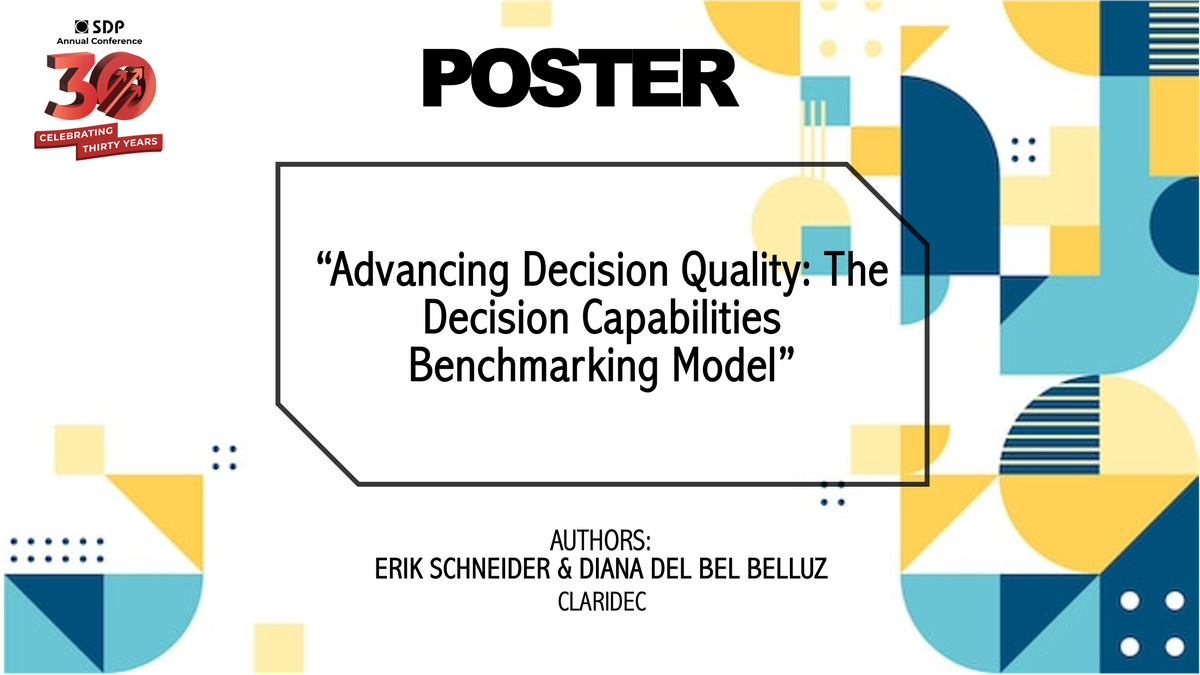
Advancing Decision Quality: The Decision Capabilities Benchmarking Model
Authors: Erik Schneider & Diana Del Bel Belluz (Claridec)
Abstract:
The context of decision-making is ever-changing. The post-COVID reset, culture wars and the advent of generative AI have all impacted how organizations make decisions. Where does organizational decision-making stand today? Our Decision Capabilities Benchmarking Model, inspired by foundational work developed at Stanford University, introduces a novel framework for evaluating and enhancing decision-making processes within contemporary organizations. This model has been successfully tested with clients during the pre-Covid period and now we’re updating it for use by decision quality professionals in the new era.
Comparative Analysis and Model Differentiation
Drawing upon the latest research in behavioural decision science and practical insights from advisory practice, our model goes beyond traditional frameworks to examine decision factors such as decision dialog, quantification, external stakeholders and lookbacks. This multidimensional approach is tailored not just for theoretical insight but for practical deployment across diverse organizational settings. The benchmark model provides SDP attendees insight into the following representative gaps:
- Risk Management vs. Bias Awareness: This highlights the balance between analytical risk assessment and the psychological factors influencing decision quality.
- Framing vs. External Stakeholders: This reveals gaps between internal decision-making processes and external engagement practices.
- Collaborating to Align vs. Decision Governance: This indicates whether strong governance structures support and reinforce collaborative efforts.
- Learning Organization vs. Lookbacks: This suggests challenges in translating learning into actionable insights or systematically applying lessons learned to improve decision quality. In addition, failure to incorporate findings into L&D processes may cause training to be outdated or based on different contexts.
- Decision Dialogue vs. Risk Quantification: This reveals inconsistencies in how dialogue and data inform decision-making, highlighting areas where improvements in communication could enhance risk management practices.
Collaboration and Benchmarking Initiative
Central to our initiative is a collaborative benchmarking effort, and we seek the support of SDP in distributing the survey to its members to ensure the robustness and accuracy of its findings. A comprehensive analysis would benefit all facets of the decision-making community, ensuring the model's relevance and effectiveness.
We further invite SDP attendees to engage with the model's conceptual framework and potential applications, encouraging contributions that will refine and enhance its utility.
Key takeaways for poster readers:
- An updated understanding of organizational decision-making gaps and their consequences.
- Insight into how the model can be specifically applied to improve decision quality and organizational performance
